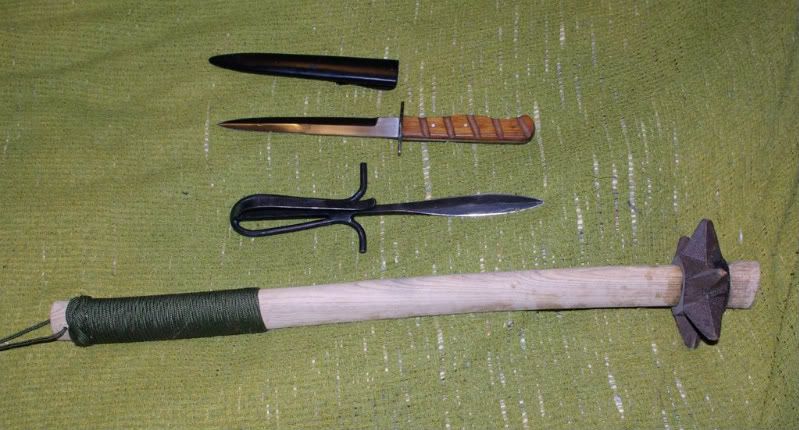
 |
|
|
|
|
#1 |
|
Member
Join Date: Mar 2006
Location: Room 101, Glos. UK
Posts: 4,263
|
during WW1 the combatants found that a knife was more handy in the trenches than a sword or issue bayonet (the ones in use were usually long sword bayonets) so the trench knife became a field expedient.
they were produced from cut down bayonets, barbed wire posts, large nails, anything that could be turned into a weapon by the local unit armourer. the germans, of course were more organised and produced large numbers of trench knives. the brits, besides knives, were rather fond of coshes (wood handle with a lead lump on the end, frequently covered in leather) or trench maces of cast iron to fit the entrenching tool handle. the french made a large number from old lebel bayonets, and from large nails and barbed wire posts. quite a variety would have been made by local 'designers' and i'd guess that yours was one. unfortuneatley most of them never made it to the trenches, as the owners got machined gunned before getting there, but some were used to great effect.  top, german grabendolche, boot scabbard. middle, french nail knife. bottom UK trench mace. |
|
|

|
|
|
#2 |
|
Member
Join Date: Nov 2006
Location: The Netherlands
Posts: 2,238
|
The blade does not fit in the picture of any WW1 bayonet that I know.
And also the shape and finish of the brass handle does not make is a perfect close combat weapon. So I don't whink this is a fighting knife. maybe it is a reworked tent peg that could now be fitted on a wooden pole. But that is merely a guess 
|
|
|

|
 |
|
|